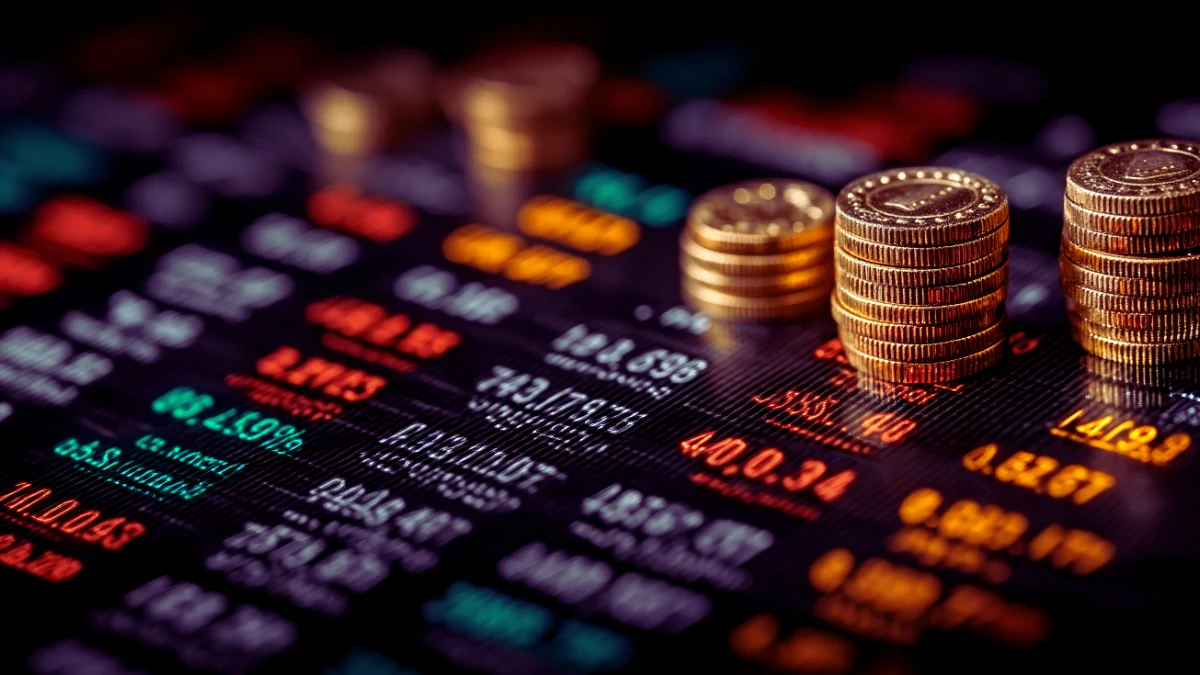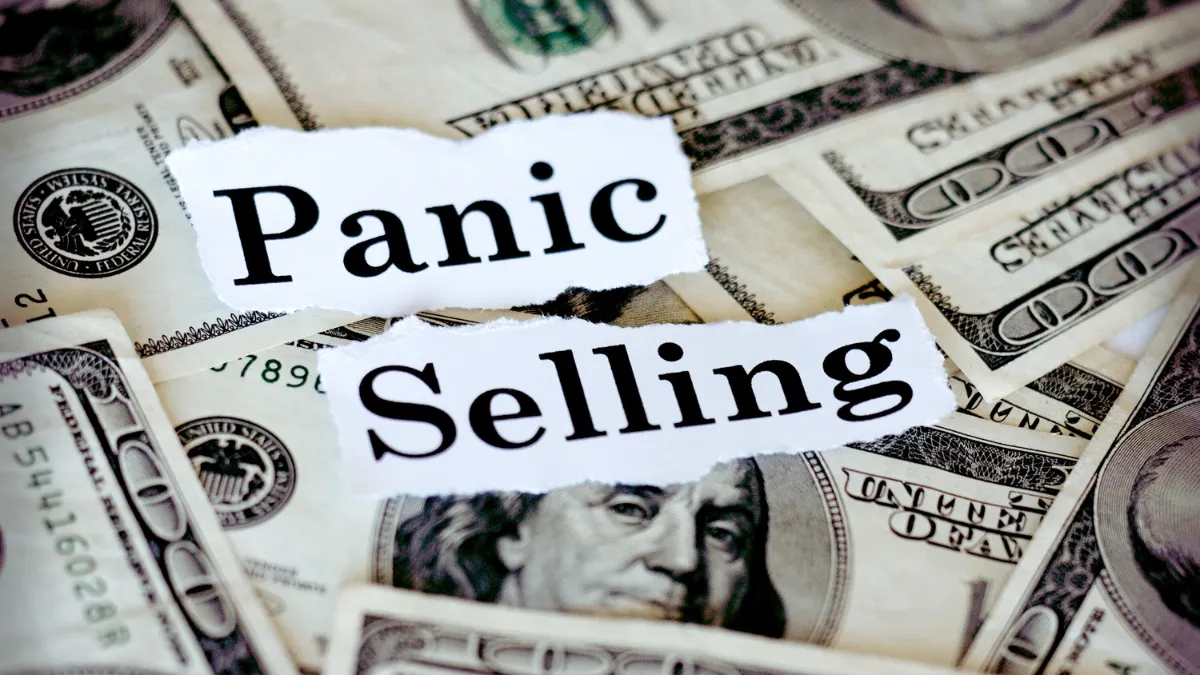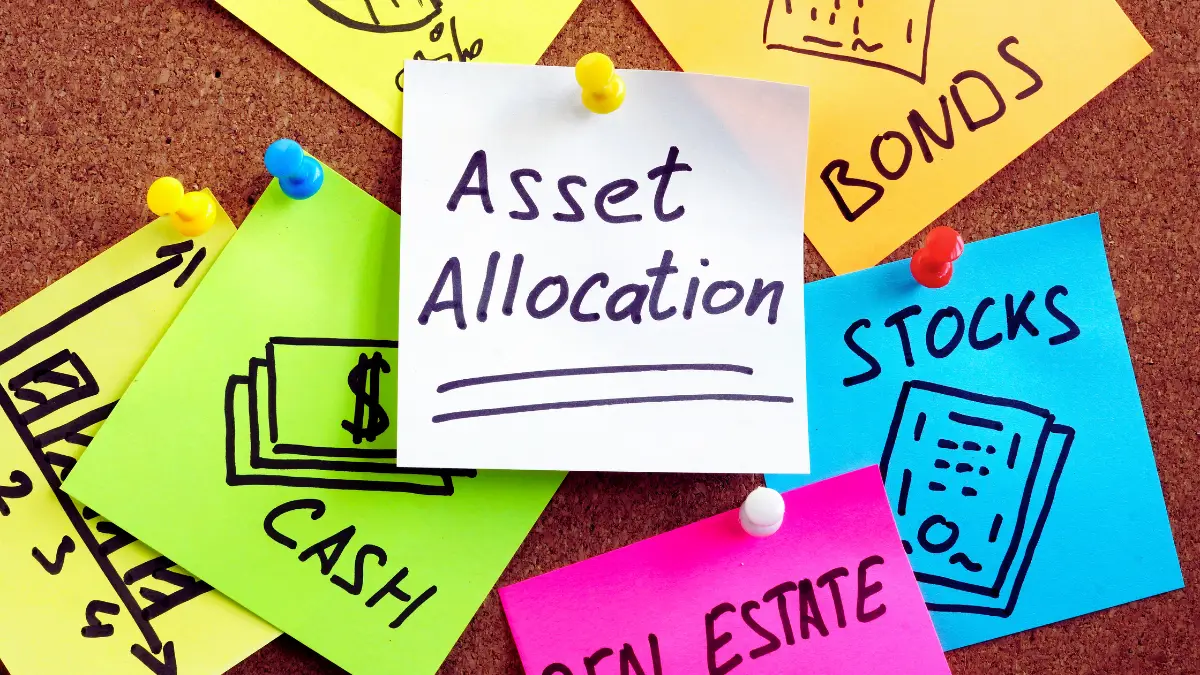Your portfolio probably looks like everyone else’s.
Most of it sits in US stocks. Maybe some bonds. A bit of cash. You’ve been told this is “balanced.” But in 2025, balanced is breaking.
Here’s what happened: Poland’s central bank just raised its gold target from 20% to 30% of all its reserves. Think about that. A major European country is betting three out of every ten dollars on gold.
They’re not doing this for fun.
The old rules stopped working. Stocks and bonds used to move in opposite directions. When one fell, the other caught you. Not anymore. The dollar used to be the safe choice. Not anymore. Your 60/40 portfolio used to protect you. Not anymore.
You need a new plan.
This guide shows you the three-bucket strategy that central banks and major investors are using right now. Not theory. Not “might work someday.” What’s working in October 2025?
You’ll learn exactly how much to put in each bucket. Which investments to buy? And why this matters more than any other change you’ll make this year.
The World Isn’t Shrinking—It’s Splitting

Everyone keeps saying “deglobalization.” They’re wrong.
The world isn’t becoming less connected. It’s splitting into sides. Countries are still trading with each other. They’re just pickier about who.
Think of it like high school. The cafeteria didn’t disappear. But now there are clear tables. You sit with your friends. You avoid your enemies. And some people get stuck in the middle.
This changes everything for your money.
Here’s what’s happening: The US and Europe buy less from China in sensitive areas like chips and drugs. But they still buy furniture and toys. China sells more to Southeast Asia. Everyone keeps trading. Just with different partners.
For you, this means one thing. Don’t put all your money in one country. Even if that country is America.
Look at the numbers. From January to May 2025, international stocks gained 10% while US stocks fell 5%. That’s a 15% swing. If you had zero international exposure, you missed the winning side completely.
The split isn’t stopping. It’s getting stronger. And your portfolio needs to reflect that.
Why Your Current Mix Is Failing

Remember when bonds protected you during stock crashes? That was nice while it lasted.
In early 2025, something broke. Stocks fell. Bonds fell, too. Even the dollar wobbled. Investors who thought they were “diversified” watched everything drop together.
The old 60/40 split (60% stocks, 40% bonds) lost both ways. If you had 100% in US assets, you got hit harder than people who spread their money around.
A study by the World Gold Council in 2025 found that 73 central banks participated in their gold survey—the highest number in eight years.
Even more striking: 43% of central banks said they plan to increase their gold holdings in the next 12 months. These are the people managing entire countries’ money. They see something coming.
When Poland, Turkey, and Kazakhstan all buy gold at the same time, it’s not a coincidence. They’re preparing for more chaos. More splits. More uncertainty.
You should, too.
Bucket #1: Commodities (25-35% of Your Portfolio)

Start here. Commodities are physical things. Gold. Oil. Copper. Wheat. Things you can touch.
Why this matters now: When currencies wobble and countries fight, physical assets hold value. You can’t print more gold. You can’t sanction a barrel of oil. These things exist regardless of politics.
Gold Comes First
Put 10-15% of your money in gold. Here’s why.
Gold hit 40 new record highs in 2025. Through June, it gained 30%. While stocks bounced around, gold climbed steadily.
But the real story isn’t the price. It’s who’s buying.
Central banks bought over 1,000 tonnes of gold every year from 2022 to 2024. In 2025, they’re still buying. Goldman Sachs estimates they’re adding 80 tonnes every month. That’s $8.5 billion worth.
Poland added 67 tonnes this year alone. Kazakhstan added 25 tonnes. Turkey has been buying for 26 months straight. These countries are moving serious money into gold.
You can’t match their scale. But you can follow their logic.
How to buy it: Get a gold ETF like GLD or OUNZ. These track the gold price. You don’t need to store physical bars in your closet. The ETF does it for you.
Broad Commodities Come Second
Add 10-15% to broad commodity funds. These give you exposure to oil, natural gas, agriculture, and industrial metals all at once.
Since mid-December 2024, the Bloomberg Commodity Index has risen 6.4%. During that same time, the S&P 500 fell 1.9%. Commodities won by more than 8%.
Energy has the highest “inflation beta” among all commodity types. That’s a fancy way of saying: when prices rise, energy profits most. With inflation still above 2%, this matters.
Agriculture is heating up, too. The weather pattern is shifting from El Niño to La Niña. This changes crop yields. Soybeans, corn, and wheat could see price jumps.
How to buy it: Look at broad commodity ETFs. The abrdn Bloomberg All Commodity Strategy ETF (BCI) covers multiple types. The abrdn Bloomberg Industrial Metals ETF (BCIM) focuses on metals used in manufacturing and green energy.
Industrial Metals Round It Out
Put 5-10% in industrial metals like copper and lithium. These metals power the green energy transition.
Electric cars need copper wiring. Solar panels need silver. Battery plants need lithium. As countries push for clean energy, demand for these metals grows.
Copper has returned more than 400% over the long term. That’s better than most stock indexes. Gold has returned 600%+. These aren’t lottery tickets. They’re proven assets with real uses.
Bucket #2: Currencies (20-30% of Your Portfolio)

Most Americans have 90% of their money in dollars. This is a bet. Maybe you didn’t mean to make it. But you did.
What if the dollar falls? What if other currencies rise? You lose both ways.
JP Morgan recommends building toward 30% non-dollar exposure. This matches how international the global economy actually is.
A study by Morningstar in 2025 tracked portfolio performance across different diversification strategies. They found that non-US stocks gained 12% through June while US stocks gained just 2%.
The US dollar fell 8% during this period, which helped international investors. But here’s the key finding: portfolios with currency diversification cut their losses in half during volatile periods compared to all-dollar portfolios.
The dollar has been strong for years. That’s changing. BlackRock tracks dollar cycles going back to 1971. The average cycle lasts 8 years. We might be at the start of a weakening phase.
This isn’t doom and gloom. It’s an opportunity. When one currency falls, others rise. If you own both, you smooth out the ride.
Euro Gets The Biggest Slice
Put 12-15% in euro-denominated investments. That means European stocks or bonds priced in euros.
Why euros? Europe is getting its act together. Germany is committed to major spending on infrastructure and defense. This supports growth. Better growth usually means a stronger currency.
European stocks also trade cheaper than US stocks. You pay less for the same earnings. That’s value.
How to buy it: Buy European stock ETFs without currency hedging. When you buy Vanguard FTSE Europe ETF (VGK) or similar funds, you get both the stocks AND the euro exposure. Both can work in your favor.
Japanese Yen Takes A Smaller Bite
Add 5-8% to Japanese yen exposure through Japanese stocks. Japan is having a moment.
Wages are rising for the first time in decades. Companies are improving how they operate. The currency looks cheap compared to its history.
How to buy it: Get a Japanese stock ETF like iShares MSCI Japan ETF (EWJ). You get the stocks plus yen exposure.
Emerging Markets Finish It Off
Put 3-7% in emerging market currencies through stocks. Focus on stable countries with good growth.
Hong Kong offers access to Asian growth with some legal protections. Some Latin American and Eastern European countries offer high interest rates plus growth potential.
Be careful here. Emerging markets swing harder than developed ones. Keep this slice small.
How to buy it: Use emerging market ETFs like Vanguard FTSE Emerging Markets ETF (VWO). Or focus on specific regions you trust.
Bucket #3: Cash and Tactical Moves (15-25% of Your Portfolio)

Cash seems boring. It’s not.
Cash gives you two superpowers. First, it lets you sleep at night when markets crash. Second, it lets you buy when everything’s on sale.
The bucket strategy works like this: Keep enough cash to cover 1-5 years of expenses. That way, when stocks drop 30%, you don’t have to sell. You tap your cash. You wait for recovery. You win.
This saved people in 2022 when both stocks and bonds fell together. Those with cash buckets didn’t panic sell. They rode it out.
Keep True Cash Available
Hold 5-10% in actual cash. High-yield savings accounts or money market funds work.
If you’re retired, keep 1-2 years of living expenses here. If you’re still working, keep 3-6 months as an emergency fund.
This isn’t about making money. It’s about having money when you need it.
Add Short-Term Bonds
Put another 5-10% in short-term bonds. These pay interest but don’t swing wildly in price.
Focus on the 3-7 year range. These bonds give you a decent yield without too much risk. Investment-grade corporate bonds work well here.
Why short-term? Long-term bonds (10+ years) swing in price when interest rates move. Short-term bonds stay steadier.
How to buy it: Look at bond ETFs focused on short duration. Vanguard Short-Term Corporate Bond ETF (VCSH) or similar funds do the job.
Save Room For Opportunities
Keep 5-10% for tactical moves. This is your “something interesting just happened” money.
Maybe commodities crash, but the long-term story stays strong. You buy the dip. Maybe a currency swings too far. You step in. Maybe real assets get too cheap. You pounce.
These aren’t day trades. They’re smart moves when prices disconnect from reality.
How to use it: Keep this in money markets or short-term Treasuries until you need it. When opportunity comes, you’re ready.
How Much Goes Where? Pick Your Mix

Everyone’s different. Your age, income, and guts matter. Here are three basic splits.
Conservative (Protecting What You Have)
- Commodities: 25%
- Currencies: 20%
- Cash/Tactical: 25%
- Traditional stocks/bonds: 30%
This mix protects first, grows second. Good for people near retirement or anyone who needs their money soon.
Balanced (Growth With Protection)
- Commodities: 30%
- Currencies: 25%
- Cash/Tactical: 20%
- Traditional stocks/bonds: 25%
This splits the difference. You get protection from the three buckets. You keep some traditional exposure for growth.
Growth-Focused (Maximum Opportunity)
- Commodities: 35%
- Currencies: 30%
- Cash/Tactical: 15%
- Traditional stocks/bonds: 20%
This leans hard into the new opportunities. You’re betting the fracturing continues. You want to be positioned for it.
Pick the mix that lets you sleep. Don’t pick “growth” if crashes make you panic sell. Don’t pick “conservative” if you’re 30 years from retirement.
What’s Actually Working Right Now

Cut through the noise. Here’s what made money in 2025.
Gold crushed it. Up 30% through June. It hit new records over and over. Central banks kept buying. Investors kept buying. The price kept climbing.
International stocks beat US stocks badly. Through May, international developed markets gained 10% while the S&P 500 lost 5%. That’s a 15% difference.
Commodities overall rose while US stocks fell. The Bloomberg Commodity Index gained over 6% while the S&P 500 dropped almost 2%.
The dollar weakened. Down 8% through June. If you owned euros or yen, that helped.
What flopped? US small-cap stocks. Long-term Treasury bonds. Anything that bets on US dominance continuing forever.
The pattern is clear. Spread your money around. Don’t bet everything on America.
Don’t Make These Mistakes

Most people mess this up in predictable ways.
Mistake #1: Keeping everything in US dollars. You’re making a huge currency bet without meaning to. The dollar might stay strong. Or it might not. Why risk it?
Mistake #2: Thinking all commodities are the same. Gold protects against chaos. Oil profits from the shortage. Copper wins from green energy. These are different stories. Don’t lump them together.
Mistake #3: Assuming stocks and bonds still protect each other. They moved together in 2022. They moved together in early 2025. The old relationship broke. Act like it.
Mistake #4: Panic selling during drops. This is why you have the cash bucket. When markets crash, you tap cash. You don’t sell stocks at the bottom. The bucket strategy only works if you use the buckets.
Mistake #5: Waiting for certainty. You’ll never have perfect information. Central banks are already moving. You can start with 10% and build from there. Don’t wait until everyone else figures it out.
Your Action Plan (Start This Week)

Don’t get overwhelmed. Take it step by step.
Week 1: Figure out where you are. Log in to your accounts. Add up what you own. What percentage is in US stocks? US bonds? US dollars? Write it down.
Week 2: Add commodities. Start with gold. Buy a gold ETF with 5-10% of your portfolio. If that feels right, add a broad commodity fund with another 5-10%. You’ve now built bucket one.
Week 3: Add international exposure. Buy an international developed markets ETF. Put 10-15% there. This starts your currency bucket. The ETF gives you both foreign stocks and foreign currency exposure.
Week 4: Check your cash. Do you have enough sitting ready? Add to your money market fund or high-yield savings if needed. You want that cushion.
After four weeks, you’ve got a basic three-bucket setup. You’re not all-in on US assets anymore. You’re spread across the things that are actually working.
Then what? Rebalance quarterly. Every three months, check if your buckets have drifted. If commodities jumped to 40%, trim back to your target. If cash fell to 10%, add more.
This isn’t complicated. It’s just different from what you’re used to.

